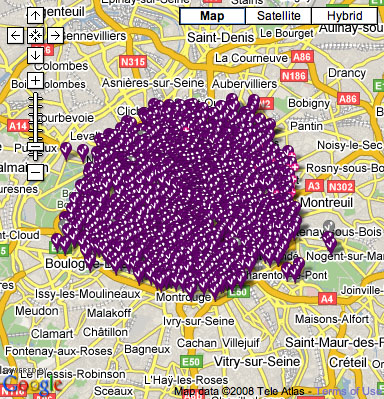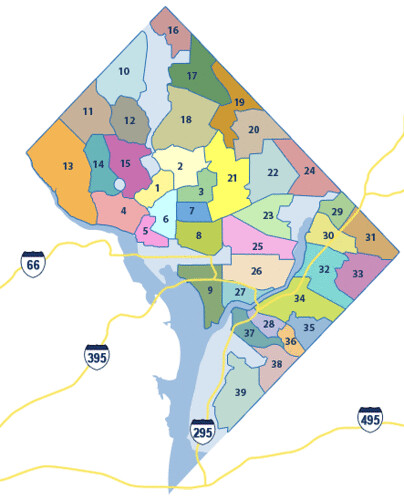Reconsideration of my Smart Bike criticism

Map of bicycle sharing stations in Paris.
... well, not my criticism (see "Montreal vs. DC in bike sharing..." and "Don't "foul" up" about the U.S. House of Representatives attempt at bicycle sharing) but whether or not SmartBike DC, the bicycle sharing program could have significant impact if it is set up properly.

SmartBike bicycle sharing in DC.
I was riding down Georgia Avenue this morning, and around 7th and Florida Avenue, a Smart Bike+rider joined me in the bike lane. I passed him, but he caught up at the stop light at Rhode Island Avenue, and I turned back and asked him (I found out his name is Ben) why didn't he just buy his own bike.
Ben said that it's convenient for him, because crazily enough, a SmartBike Station was installed at 7th and T Streets NW, two blocks from where he lives. So we continued riding and talking down 7th Street, and I learned that there is a station within a block or two of where he works. And that another of his co-workers uses SmartBike, because the Logan Circle area station is pretty close to where he lives.
The real problem with the implementation of SmartBike DC thus far has been timidity. There are very few stations overall (although there is a plan underway for significant expansion) and most of them are downtown.

Map of bicycle sharing stations in DC.
If you expect DC residents to be the bulk of the users, the fact that for the most part there aren't stations in neighborhoods, albeit in highly-traffiked locations, is a problem.

Map of DC (by "clusters" as defined by the DC Office of Planning.)
If you expect commuters (non-DC residents) to use the system, then the stations have to be by subway stations and their offices, and likely for most people how take the subway to downtown (where the bulk of the sharing stations are located presently), it's just as fast and as pleasant for them to walk, hence minimal use of the bicycle sharing program.
But the biggest problem with a focus on commuters is communicating with them as for the most part, they aren't interested in the world outside of the floor of their office, and they don't get regular communications from anybody (their building management, the Downtown DC BID, etc.) that tells them what they can do while they are here during the day.
The real opportunity will be in the core of the city, where residents, activity centers, and other destinations are in close proximity.
And there is something to be said for paying about $40 for membership, having access to a bike (although they can't be ridden very fast and I am hardly a fast bicyclist), and not having to worry about paying for it to be maintained.
Labels: bicycling, bikesharing, change-innovation-transformation, civic engagement, transportation planning



0 Comments:
Post a Comment
<< Home